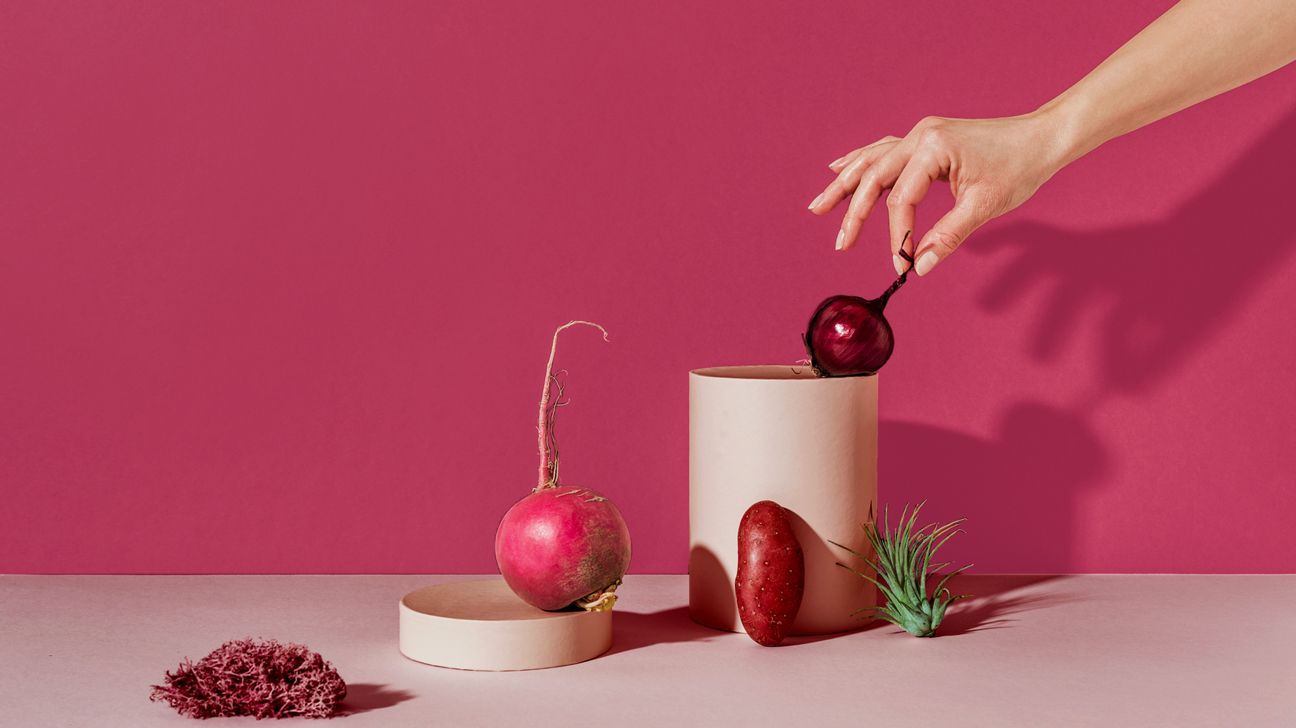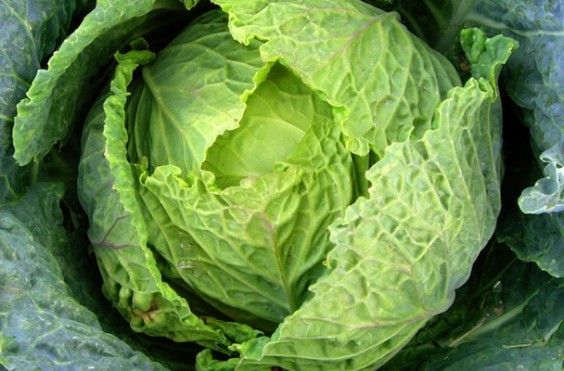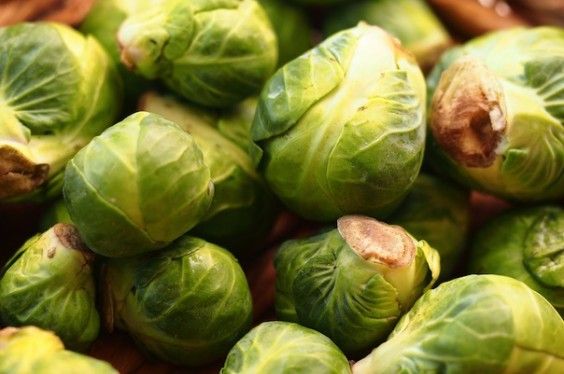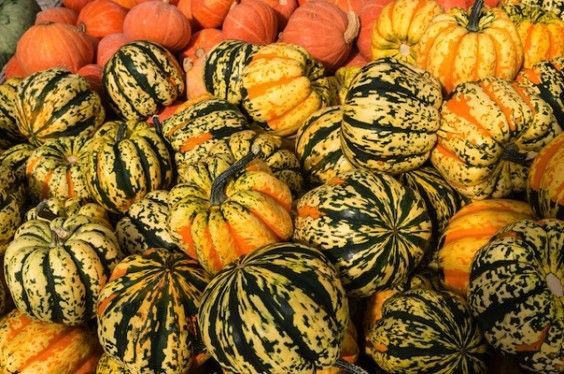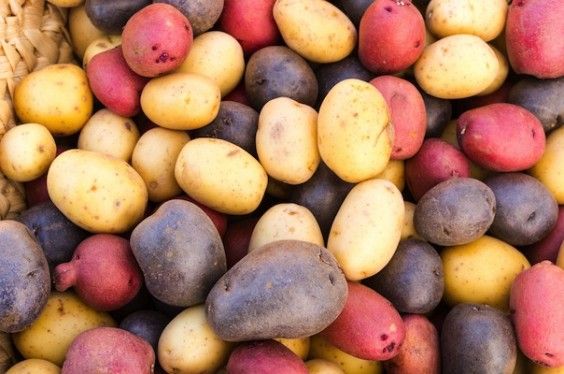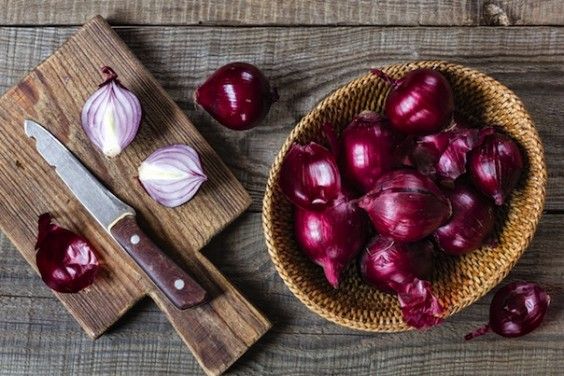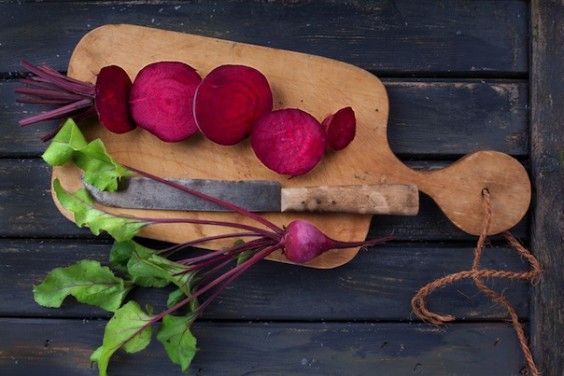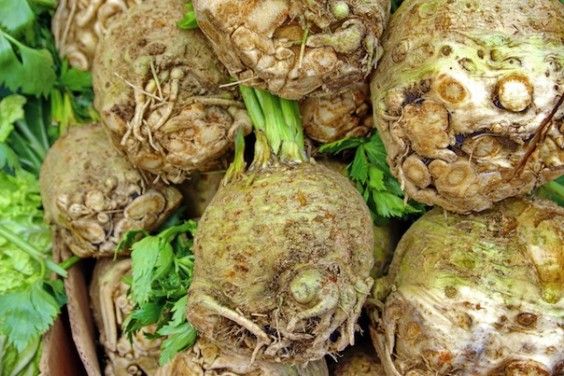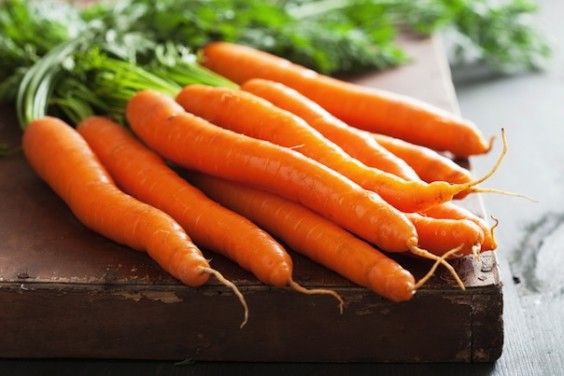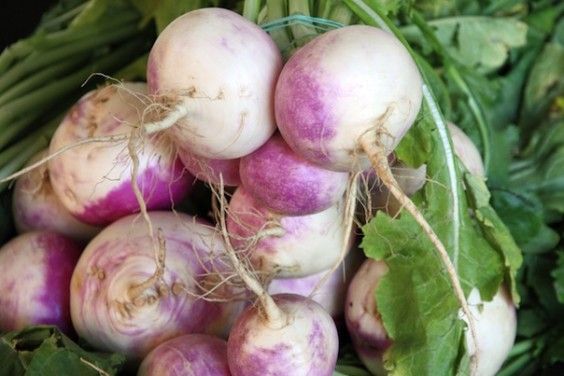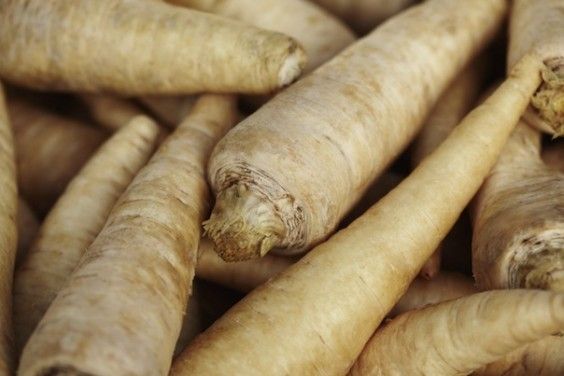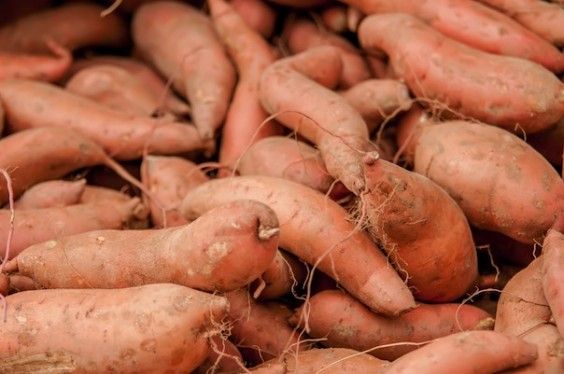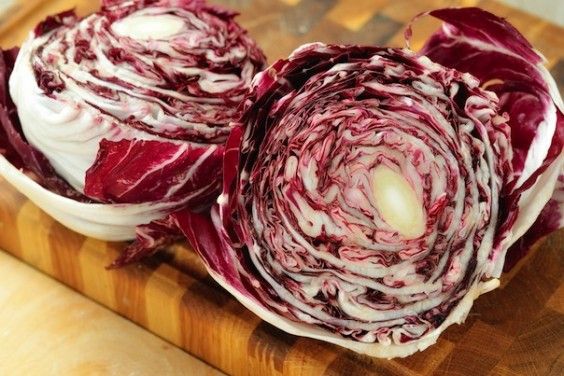Winter is coming. But the veggies, sadly, are on vacation.
Sparkly snowflakes, cozy blankets, rich hot chocolate, hypnotically awful made-for-TV Christmas movies, soaring utility bills… Winter has plenty going for it, but fresh produce is usually not on that list.
When they don’t usually grow in colder climates, finding locally grown veggies and fruits to nourish you in winter can be downright challenging.
However, we’re here with some good news: Not every meal until April needs to revolve around potatoes and onions. With a bit of planning and creativity, it’s possible to get your fix of fresh fruits and vegetables all winter long.
Hang out for a bit to learn about the unexpected, vitamin-rich, cold-weather foods you should stock up on just before winter.
Made in and for winter, these ultra-nutritious seasonal offerings form the staple of a hearty winter diet. Antioxidants, vibrant colors, and cosy flavors — nothing comes close on a chilly day.
1. Cabbage
- Peak season: While some strains of cabbage are available all year round, most varieties love cool weather and are ready for harvest through the fall and winter.
- Storage tips: Tightly wrap individual heads of cabbage in plastic, and stash them in the refrigerator to keep them fresh for up to a week.
- How to eat it: Cabbage’s nutritional benefits are most pronounced when raw, so slice up a few leaves to add crunch to salads or stir-fries.
Time to head to the cabbage patch, kid!
This super-healthy, budget-friendly vegetable is a close cousin of other favorites from chilly climes, like cauliflower, brussels sprouts, kale, and broccoli.
Cabbage provides plenty of vitamins and minerals, including cameos from vitamins C and K, as well as folate, fiber, antioxidants, and anti-carcinogenic compounds called glucosinolates.
That’s one hell of a supporting cast. Can’t be bothered with complicated meal planning on a cold evening? Here’s four cabbage recipes you can throw together with minimal fuss.
2. Brussels sprouts
- Peak season: September through February
- Storage tips: Brussels sprouts will stay fresh in the fridge for a few weeks. The outer leaves will shrivel, so remove them just before cooking your sprouts.
- How to eat it: Toss halved sprouts with olive oil and roast until crispy and brown. Top with a light coating of brown butter and sage for a decadent (but still healthy) side dish.
These trendy sprouts are finally getting their turn in the spotlight.
The humble brussels sprout, aka cabbage’s mini-me, boasts some of the same health benefits as its big bro. It has a bad rap, despite its clear links to both farts and Christmas. No, we don’t understand it either.
Like other cruciferous veggies, brussels sprouts have high levels of cancer-fighting antioxidants that may protect DNA from harmful compounds in the body.
It’s basically Jean Claude Van Damme in your belly.
If you’ve got judgy relatives coming over for Christmas, here are some easy ways to impress their taste buds using brussels sprouts alone.
3. Winter squash
- Peak season: Winter squash hit markets around late September and stick around through early March.
- Storage tips: Even though they seem pretty solid, squash continues to ripen after picking. People can slow down ripening by storing them in a slightly humid environment (like a basement or cellar). Under the right conditions, squash will keep for up to 3 months.
- How to eat it: Since squash is healthy, fairly inexpensive, filling, and super darn tasty, it’s no wonder that there are thousands of awesome recipes for them. Get started with these five delicious dishes.
Get ready to taste the gourdy goodness!
Acorn, butternut, kabocha, and delicata squash are all at their prime during the fall and winter. Squash’s trendy golden flesh is teeming with nutrients, including carotenoids, Vitamin A, and potassium.
Squash your beef with veg this winter using these 31 amazing… yep, squash recipes.
4. Potatoes
- Peak season: Various varieties of potatoes are available year-round.
- Storage tips: Store potatoes in a dark, cool, well-ventilated area for about 1 month. Keep spuds away from onions and apples — they do not get along. At room temperature, potatoes will keep for 1 to 2 weeks.
- How to eat it: There is a ridiculous range of ways to work potatoes into a meal. Here are 71 options we love to bits.
Spuds get a bad rap, but they’re a staple food in many cuisines for good reason. In “Toy Story,” see how Andy always casts Mr. Potato Head as a bad guy when he’s playing. It’s not right.
(Sort your sh!t out, Andy. If they’re good enough for Gollum, they’re good enough for you too.)
Sure, potatoes are starchy and high on the glycemic index.
Fancy purple taters may even help people bring down blood pressure and boost antioxidants.
While sweet potatoes may be a healthier choice, with their treasure trove of beta-carotene, vitamins A and C, and fiber, regular white spuds are still a wholesome option, depending on the cooking method of choice.
Want to make the leap to sweet potatoes? Look no further than these stuffed sweet potato miracles.
5. Onions
- Peak season: Various types of onions are available all year.
- Storage tips: Stash onions outside the fridge, as they can go soft in the refrigerator. They’ll keep in a cool, dry place for several months.
- How to eat it: Sautéed white onion jazzes up this fig, ricotta, and arugula flatbread pizza.
Ideal for flavoring anything from soup, to grain salads, to pasta, to meat, onions are a year-round kitchen all-star. They might make you cry, but onions are actually pretty healthy.
It’s definitely the onions and not the fact you’ve now reached “Toy Story 3.” (And Andy is still a potato bigot.)
The unassuming veggies are low in calories but provide surprising amounts of vitamin C and fiber. A 2009 study found that the oils in onions can bring down LDL (“bad”) cholesterol levels and increase HDL (“good”) cholesterol in mice.
Here’s how to cut an onion without crying. Our first recommendation: Turn off “Toy Story 3.” It’s okay, we cried too.
6. Beets
- Peak season: You can get beets from early spring through late fall.
- Storage tips: It’s best to store beet roots in a plastic bag in the refrigerator for up to a month.
- How to eat it: Toss roasted beets and carrots with lentils and plenty of fresh herbs and spices to make a hearty, healthy veggie main.
Sweet, earthy, and deep red, beets are pretty unique in the vegetable aisle. Beets contain antioxidants called betalains, which can help fight cancer and other degenerative diseases.
They’re rich in vitamins A, B, and C, as well as potassium and folate. They’re also a natural source of sugar (about 9 grams per serving), so those looking to cut down on sweet stuff should take note. Not bad for a bright-red bulb, right?
In addition, beets have naturally occurring dietary nitrates which increase nitric oxide in the body. Nitric oxide is linked to improved blood flow, lowered blood pressure, increased exercise performance, and improved cognitive functioning.
Here’s a beet and carrot salad to get you cracking.
7. Celeriac
- Peak season: You can get in on the celeriaction between September and March.
- Storage tips: Like other root veggies, celeriac will stay fresh in the fridge for up to a month.
- How to eat it: Celeriac can sub for almost any root vegetable. Cube and sautée it for a tasty, healthy substitute for hash browns.
Celeriac may well be the ugly duckling of winter produce. It’s a misshapen, greenish-white blob covered in little roots. Mmm, dinner.
But beyond the odd exterior, celeriac boasts a tasty, subtle flavor — somewhere between parsley and celery — and a hearty texture. Never judge a book by its cover, or a celeriac by its disgusting taste in outerwear.
It’s low in calories, high in fiber, and a dope source of vitamin C, which acts as a powerful antioxidant, and phosphorus, which can help keep dem teefs strong and shiny.
Celeriact now! Start getting creative with winter veg.
8. Carrots
- Peak season: Available through late fall, although some varieties become ready for harvesting during the winter.
- Storage tips: Like many root vegetables, carrots will keep in a plastic bag in the refrigerator for several weeks.
- How to eat it: Bring out their natural sweetness with a side dish that combines the orange veggies, cinnamon, orange juice, and maple syrup.
Did your mom ever tell you to eat carrots for healthy eyes? These are filled with the antioxidant beta-carotene, a compound that converts to vitamin A in the body.
According to the Office of Dietary Supplements (they know their carrots from their courgettes) Vitamin A is essential for a kick-ass immune system and healthy eyes, skin, and mucous membranes.
The orange veggies are also brimming with vitamin C and lutein, antioxidants that can help you keep disease the heck away.
Eeeeh, what’s up, Doc? Well, Doc says that eating carrots may reduce a person’s risk of lung cancer.
But if you want loads more great ideas for carrots, such as making them into a completely vegan cake, have a look here.
9. Turnips and rutabagas
- Peak season: These turn-ip to the party all winter long, like a very chilly Lionel Richie.
- Storage tips: You can keep turnips and rutabagas in the fridge for a few weeks or in a root cellar for several months.
- How to eat it: What’s cheesy, gooey, and surprisingly good for you? A lightened-up simple turnip gratin! Rutabagas can rock up in disguise and replace turnips in any dish.
These purple-and-white bulbs might look like potatoes with a mohawk, but they’re actually in the same family as cabbage, broccoli, and cauliflower.
Confused yet? Perhaps because of this oh-so-confusing identity crisis, turnips and rutabagas are often (unfortunately) overlooked in the produce aisle. But members of the cruciferous family have a few powerful, nutritious tricks up their sleeves.
This armory of nutrients includes:
- cancer-fighting glucosinolates
- vitamins C and K
- folate
- potassium
- fiber
- calcium
Their slightly sweet taste is also a boon to nearly any dish. Fling ’em in a pan along with their root veg cousins to make one of these 19 recipes.
10. Parsnips
- Peak season: Parsnips are at their best in the late fall and early spring.
- Storage tips: It’s best to store parsnips in a bag in the refrigerator. They’ll keep for 3 to 4 weeks.
- How to eat it: Combine roasted parsnips with Granny Smith apples (and a few other essential ingredients) for a smooth, fall-flavored soup.
These pasty, carrot-looking guys are a paragon of nutritional goodness.
They provide several nutrients, including potassium, vitamin C, and folate. Like carrots, parsnips have a slightly sweet, earthy flavor that goes well with nearly any winter soup, stew, or casserole.
11. Sweet potatoes
- Peak season: Sweet potatoes are available year-round, but they’re at their glowy, orange best in the fall.
- Storage tips: Keep sweet potatoes in a cool, dry place outside the refrigerator for up to 2 weeks.
- How to eat it: It wouldn’t be fair to pick any of these 45 sweet potato recipes and not try the rest.
Pro tip: Sweet potato brownies are a thing, and a good thing at that.
Sweet potatoes might win the award for “Most Versatile Tuber.” If John Travolta was presenting the award, he’d call them Smeeb Padoodoos. But he’s not here today, so we’re using their actual name.
These orange-hued delights pack a nutritional punch, with fiber, beta-carotene, vitamins A and C, and antioxidants stepping up to the plate. Plus, since they’re fairly low on the glycemic index, they’re great for filling up without getting weighed down.
Find twists on a classic with this sweet potato casserole.
12. Radicchio
- Peak season: There are three main varieties of radicchio available in the U.S. — Chiogga, Treviso, and Tardivo. Tardivo radicchio is available throughout the winter.
- Storage tips: Keep it in the refrigerator wrapped in plastic for up to 3 weeks.
- How to eat it: Sautéed radicchio adds a kick (and a nice serving of vitamins and minerals) to this easy pasta dish.
Besides being one of the most fun words in the English language, radicchio (pronounced ra-DIK-kio) is a member of the chicory family along with endive and escarole. Yep, we’re in #FancyBoi territory now.
Its red and white, slightly spicy, and its bitter leaves are just waiting to give you all the vitamin C, magnesium, potassium, and vitamin K.
Plus, a cup of this leafy veg only has 9.2 calories, so add it to any dish for a low cal hit of crunch and flavor.
Don’t abandon that sunny disposition just because the leaves are falling off outside. You can still access some of summer’s most precious bounty to bring back memories of sangrias, sunshine, and bad decisions.
13. Citrus fruits
- Peak season: Citrus fruits that grow in warm climates are ripe for picking between late October and March.
- Storage tips: You can store citrus in the refrigerator for a few weeks or at room temperature for up to 4 days.
- How to eat it: Try one of these five healthy citrus recipes. Or just peel, eat, wipe your face, and repeat.
Citrus is as vibrant and summery as they come, but the great news is they’re available all winter to ply you with disease-swatting benefits and tangy tastes.
Grab a handful of cheery citrus to last you until the summer fruits rejoin your piña accolades. Citrus fruits are dripping in vitamin C and flavonoids, antioxidants that block the actions of cancer-causing free radicals across the body.
Citrus consumption has also shown links to a lower risk of loads of ailments, including Alzheimer’s disease, Parkinson’s disease, diabetes, cholera, gingivitis, cataracts, and Crohn’s disease.
Stock up on lemons, oranges, grapefruit, kumquats, blood oranges, limes, and clementines to get your citrus fix this winter.
Boom! Citrus fruit smoothies, coming up.
14. Pomegranates
Pomegranates are one of the world’s oldest fruits, as well as one of the most nutritious.
- Peak season: The globe-shaped fruits are in season from October through January.
- Storage tips: Keep pomegranates in the refrigerator for up to 2 months, or at room temperature for 1 to 2 weeks.
- How to eat it: A sprinkling of pomegranate seeds adds some tart, bright flavor to a winter kale salad.
The ruby-colored seeds provide a heap of antioxidants and anti-inflammatories. These can support heart health, reduce the risk of diabetes, and help people fight infections.
A 2019 study showed that drinking pomegranate juice can reduce the build-up of fatty deposits in arteries, which is a culprit behind many heart conditions.
Extracting the seeds from a pomegranate can be tricky (and, who knows, you may burn a calorie or two doing it), but the heart-healthy, sweet-sour pods are well worth the labor.
For a less laborious option, add a splash of no-sugar-added pomegranate juice to a glass of seltzer. Or, head over to this handy guide to help you deseed a pomegranate without breaking a window.
15. Dark, leafy greens
- Peak season: Kale grows in warmer climates and the Pacific Northwest throughout the winter months.
- Storage tips: Wrap washed and dried greens in paper towels, then put the whole shebang in a plastic bag in the fridge. Greens will stay fresh for 1 to 2 weeks.
- How to eat it: You can add nutritional superpowers to a salad by swapping out boring old lettuce for kale, chard, or collards for lettuce to make a nutrient-rich salad.
Trendy kale and flavorful collards have their moment in the sun during the winter.
These veggies provide heaps of vitamins A, C, K, and E, as well as iron, calcium, manganese, potassium, and plant compounds that act as powerful antioxidants. Plus, they’re low in calories and versatile enough to fit nearly any dish.
ALL HALE KALE! (And collards, they just don’t rhyme as easily).
Kale and collard greens are members of the super-healthy brassica vegetable family, which means they help prevent cancer, fight disease, and generally keep you shiny and healthy all-round.
Let us explain how to kale correctly without resorting to plain salads.
16. Escarole
- Peak season: Escarole grows through fall and early winter in warmer climates.
- Storage tips: This dainty green is a bit delicate, so eat it up quickly. Wrapped in paper towels and stored in an open plastic bag, escarole keeps in the refrigerator for up to 4 days.
- How to eat it: Escarole adds some bright-green freshness to a classic Italian soup.
Escarole is likely to be a rare find in your nearest grocery store but can add welcome freshness to late-winter cooking.
It’s a bit crunchy, like lettuce, and wilts easily, like spinach. It’s a member of the chicory family, so hangs out with endive, radicchio, kale, and chard at family gatherings, gossiping just out of earshot.
Like other greens, escarole is high in folic acid, fiber, and vitamins A and K.
Check out our handy visual guide to our leafy green friends.
17. Fennel
- Peak season: Fennel is available at the market from late fall through early spring.
- Storage tips: Wrap fennel bulb in a paper bag and store in the refrigerator for up to 5 days.
- How to eat it: Yes, it’s possible to make a crisp, totally fresh salad during the winter. Try this fennel and celery dish for a crunchy cold-weather lunch.
With feathery leaves on top, a round, onion-shaped bulb on the bottom, and a licorice-like taste throughout, fennel is definitely one of the stranger vegetables out there. And by “strange” we mean awesome and delicious, of course. Better the fennel you know.
It’s a little bit sweet, kinda crunchy, and — above all — super healthy.
The licorice flavor abounds due to a compound called anethole. Studies suggest that this nifty compound might reduce the risk of certain cancers, suppress inflammation, and naturally make blood thinner to prevent clots.
Not bad going for a vegetable that looks like Bert from Sesame Street after a fight. Fennel also boasts a boatload of vitamins and minerals like vitamin C, potassium, magnesium, and copper.
Veggies can still be an attraction without distracting from the star of the show. Master the nutritious side dish here.
Winter brings with it the urge to slip into a Snuggie or onesie and chow down on comfort food. Santa’s been getting pats on the back for it for many years now.
Many veggies are still ready for harvest just before winter and keep for ages if they’re stored with proper care. It being winter doesn’t mean your healthful habits need to hibernate. Food can be warm, comforting, and filling, without sticking a middle finger up at your heart health.
Sick of chewing? Here are 31 veggie smoothie recipes to put your winter veg supply to good use.

